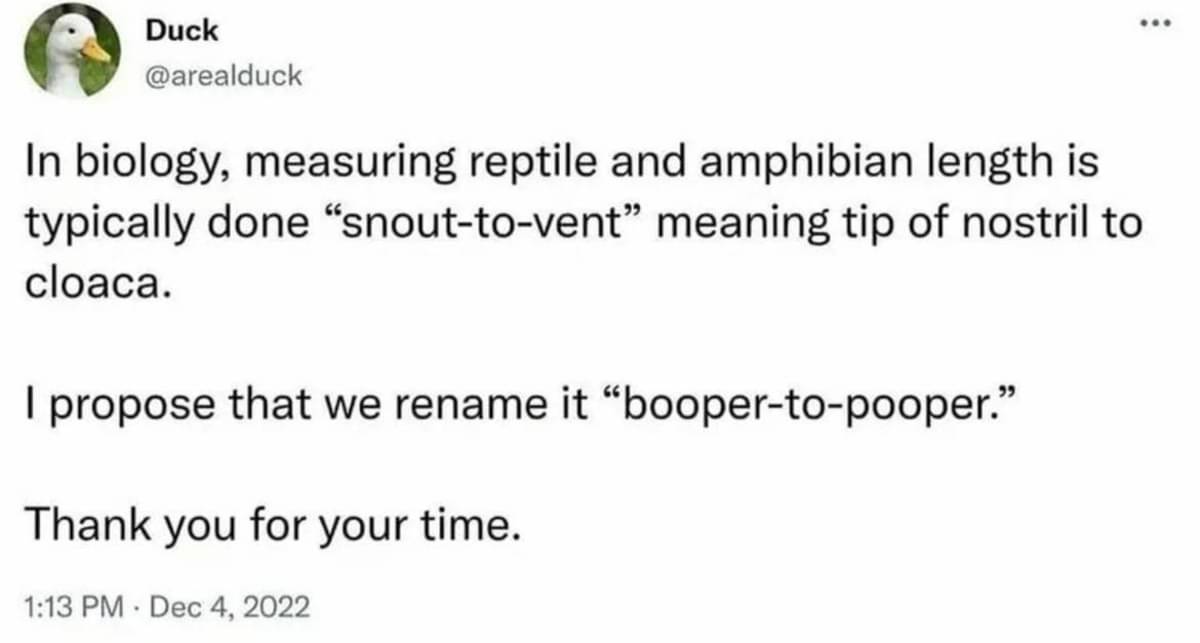this post was submitted on 02 Aug 2024
614 points (98.4% liked)
Science Memes
10271 readers
2782 users here now
Welcome to c/science_memes @ Mander.xyz!
A place for majestic STEMLORD peacocking, as well as memes about the realities of working in a lab.

Rules
- Don't throw mud. Behave like an intellectual and remember the human.
- Keep it rooted (on topic).
- No spam.
- Infographics welcome, get schooled.
Research Committee
Other Mander Communities
Science and Research
Biology and Life Sciences
- !abiogenesis@mander.xyz
- !animal-behavior@mander.xyz
- !anthropology@mander.xyz
- !arachnology@mander.xyz
- !balconygardening@slrpnk.net
- !biodiversity@mander.xyz
- !biology@mander.xyz
- !biophysics@mander.xyz
- !botany@mander.xyz
- !ecology@mander.xyz
- !entomology@mander.xyz
- !fermentation@mander.xyz
- !herpetology@mander.xyz
- !houseplants@mander.xyz
- !medicine@mander.xyz
- !microscopy@mander.xyz
- !mycology@mander.xyz
- !nudibranchs@mander.xyz
- !nutrition@mander.xyz
- !palaeoecology@mander.xyz
- !palaeontology@mander.xyz
- !photosynthesis@mander.xyz
- !plantid@mander.xyz
- !plants@mander.xyz
- !reptiles and amphibians@mander.xyz
Physical Sciences
- !astronomy@mander.xyz
- !chemistry@mander.xyz
- !earthscience@mander.xyz
- !geography@mander.xyz
- !geospatial@mander.xyz
- !nuclear@mander.xyz
- !physics@mander.xyz
- !quantum-computing@mander.xyz
- !spectroscopy@mander.xyz
Humanities and Social Sciences
Practical and Applied Sciences
- !exercise-and sports-science@mander.xyz
- !gardening@mander.xyz
- !self sufficiency@mander.xyz
- !soilscience@slrpnk.net
- !terrariums@mander.xyz
- !timelapse@mander.xyz
Memes
Miscellaneous
founded 2 years ago
MODERATORS
you are viewing a single comment's thread
view the rest of the comments
view the rest of the comments

My only question is, why are only amphibians measured this way?
Perhaps their tails are easily or often damaged?
So measuring from full fore to aft might give inconsistent results among other similar variables for the examined species, such as location, age, and weight. Going booper to pooper might give more reliable data, if the tails are often snipped at the tip by other reptiles, predators, disease, rogue mohels, swamp boat propellers, or hastily closed doors.
This is my best guess, I'm not lizardologist or a measuresmith.
I'm also not an expert, but that was my thought, too.
More than that, even if a tail is undamaged, including it is not giving useful imformation because tail size can vary out of proportion to the main body and is pretty standard for other animals as well. For example, no one is measuring a horse to include the tail length, nor a dog, cat, and generally not a bird, either.
That said, I expect an news story about alligators on the golf course or catching invasive snakes to measure the whole body for the NEWS story and let the experts worry about the booper2pooper length in their own space.
I mean, it's not the exact same, but human fetuses can be measured similarly with a "crown to rump" length. I have to notate this in my reports (but I include other measurements too like hand/foot length and "crown to heel" length).